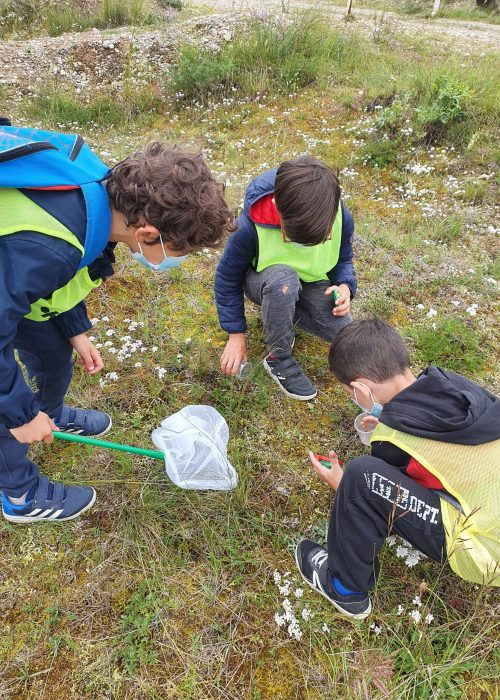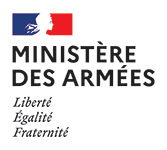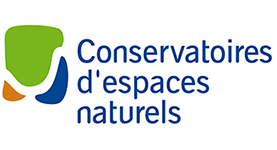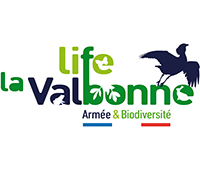
Management and conservation actions
The project will last 7 years and will considerably reinforce the ecological management and conservation actions on the camp: restoration of 700 hectares of dry grasslands and more than 3 hectares of wetlands, coordination and conciliation between the operational preparation of the troops and the ecological management actions, the development and implementation of an exemplary monitoring system for the dry grasslands, the construction of a livestock building…
All these actions will benefit the species and habitats of community interest already present, but will also encourage their return and strengthening (orchids, birds of prey, bats, passerines, steppe birds, invertebrates, etc.).
A project in 7 actions
1. Improving knowledge and scientific monitoring
2. Setting up an integrated management system
3. Restoration and preservation of steppe grasslands
4. Reintroduction of the little bustard
5. Restoration of wetlands
6. Forest restoration
7. Raising public awareness
1. Improving knowledge and scientific monitoring
As physical access to the site is difficult due to the shooting training, LIDAR mapping and low altitude aerial photographs have enabled, without having to travel to the site, a very precise mapping of the environments.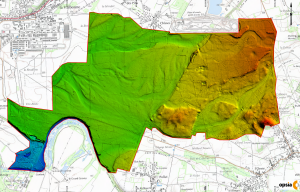
Several species of community interest were observed in the early 2000s, including the western red-footed falcon and the Little Bustard, but the site also hosts several threatened species of bats and invertebrates.
The aim is to identify ecological continuities on the habitat map in order to be able to carry out targeted reconnection work (methods: graph theory, Urban and Keitt, 2001 and electrical circuits McRae, 2006 ; McRae et al., 2008).
The CEN RA must develop a specific methodology based on using suitable biological indicators. The aim is to assess the conservation status of the dry grasslands and monitor the effectiveness of restoration work according to the management methods. This method is also intended to be exported.
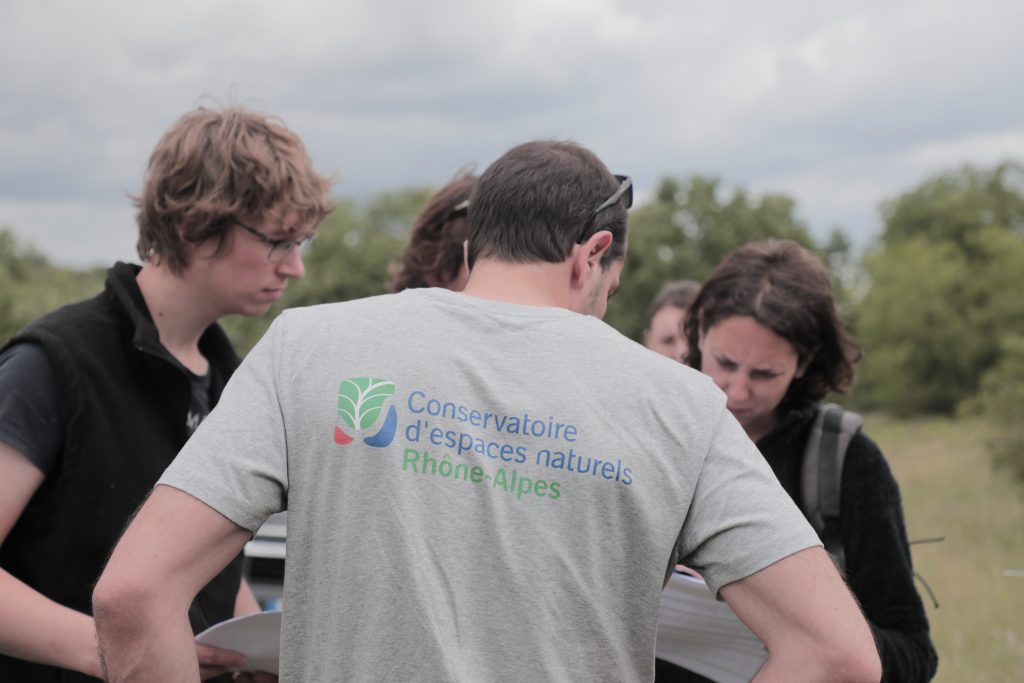
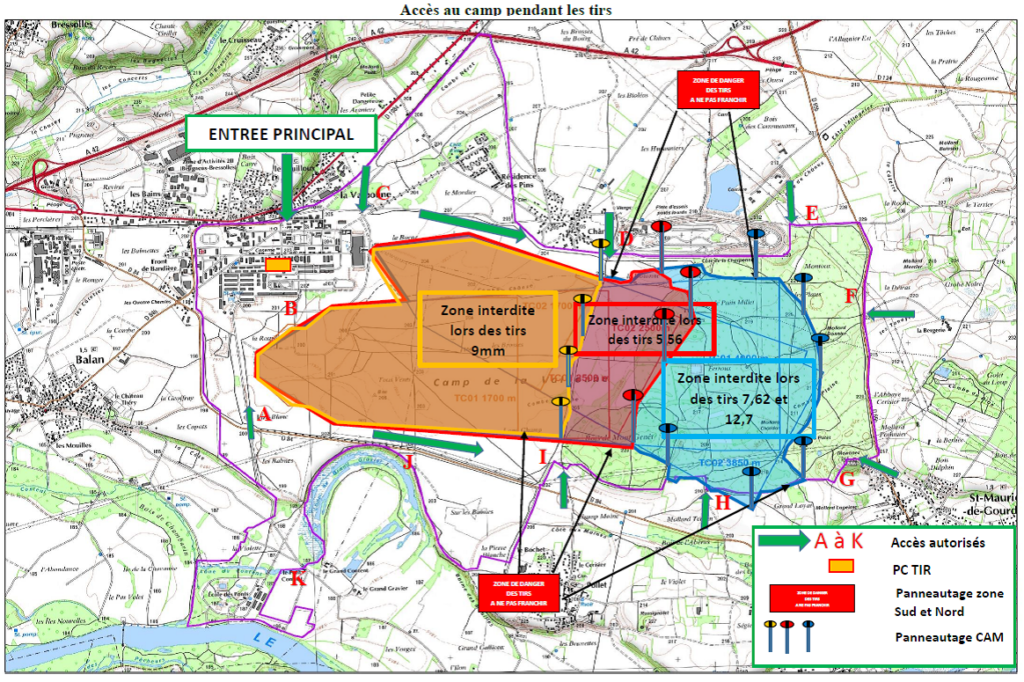
2. Setting up an integrated management system
An integrated management system adapted to the project :
Integrated management means the continuity of defence missions and the consideration of ecological issues under optimal security conditions. Awareness-raising activities will be carried out for camp users.
3. Restoration and preservation of steppe grasslands
The dry grasslands are the main issue of the site, and pastoralism must allow their restoration in the long term. Unlike mechanical management, the carbon impact of this solution based on nature, is very low, it also has the merit of participating in the local economy.
The CEN must set up several herds : donkeys in the central part but also cattle, sheep or goats. in the inner perimeter of the camp. The pastoralism of the camp requires the installation of fixed fences, the creation of a functional building and the acquisition of agricultural equipment.
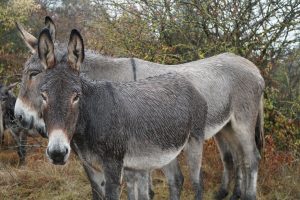
In isolated and heavily overgrown areas, the construction of rabbit warrens is the solution to restore woody areas. The wild rabbit is in serious decline in the region, the La Valbonne camp is one of its last bastions in the department. Its reinforcement would also be a boon for the raptors of community interest on the site.
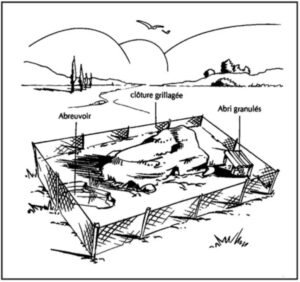
For the heavily degraded areas in the eastern part, logging, grubbing and shredding remain the only restoration solution, but in the areas dominated by upright bromegrass (bromus erectus), it will be mowing and controlled burning.
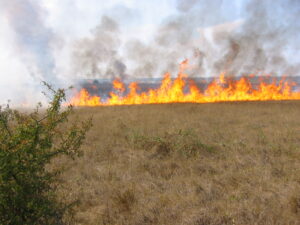
Several invasive exotic species are colonising the camp: tree of heaven (Ailanthus altissima), Japanese knotweed (Fallopia japonica), black locust (Robinia pseudoacacia), butterfly-bush (Buddleia davidii) and Canada goldenrod (Solidago Canadensis). Each of which will be eradicated with a technique validated by national or European regulations.
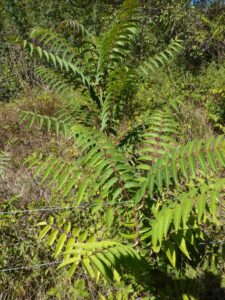
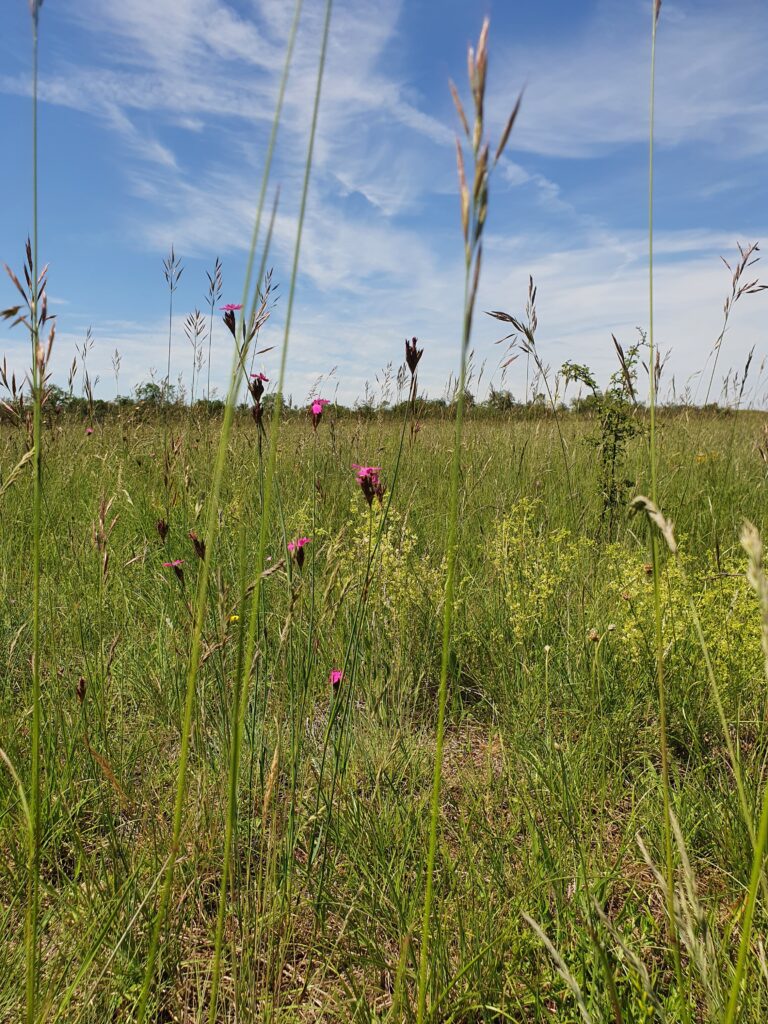
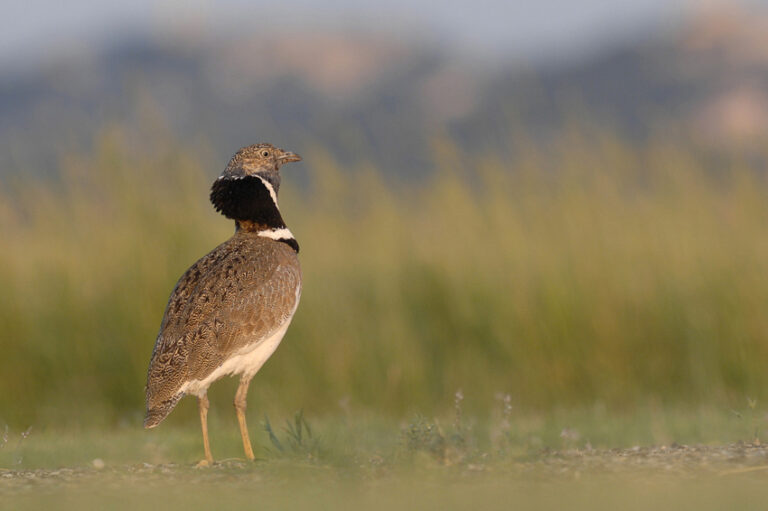
4. Reintroduction of the little bustard
Reintroduction of the Little Bustard, flagship action of the project :
This action is part of the 3rd national action plan for the Little Bustard 2019-2028. The Bustard is one of the 37 protected vertebrate species threatened with extinction in France (including 18 birds). Once widespread in the Ain plain, it owes its disappearance to the intensification of agriculture, which has led to the destruction of its habitat and the scarcity of its food resources (phytosanitary products). All the restoration actions and the introduction of crops and fallow land should encourage its nesting. However, its reintroduction is subject to an opportunity study.
5. Restoration of wetlands
To the south of the camp, on the banks of the Rhône River, 2 former dead arms called “lône de la Violette” and “lône du Grand Gravier” constitute the wetland. The area is home to a number of species of high heritage value such as: the common parsley frog (Pelodytes punctatus), the natterjack toad (Bufo calamita) and the European tree frog (Hyla arborea). It is also a training area for the military, who are trained in a “mangrove course” that meets the extreme requirements of certain external operations.
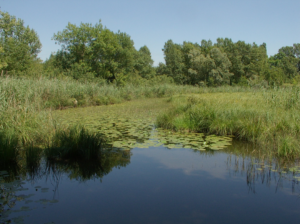
- A hydrological restoration of the lône de La Violette,
- The restoration of the downstream part of the lône du Grand Gravier,
- And the conversion of a poplar grove into a wet meadow wetland of priority interest
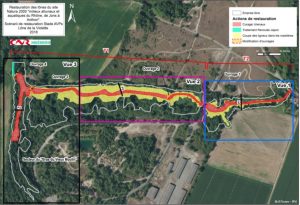
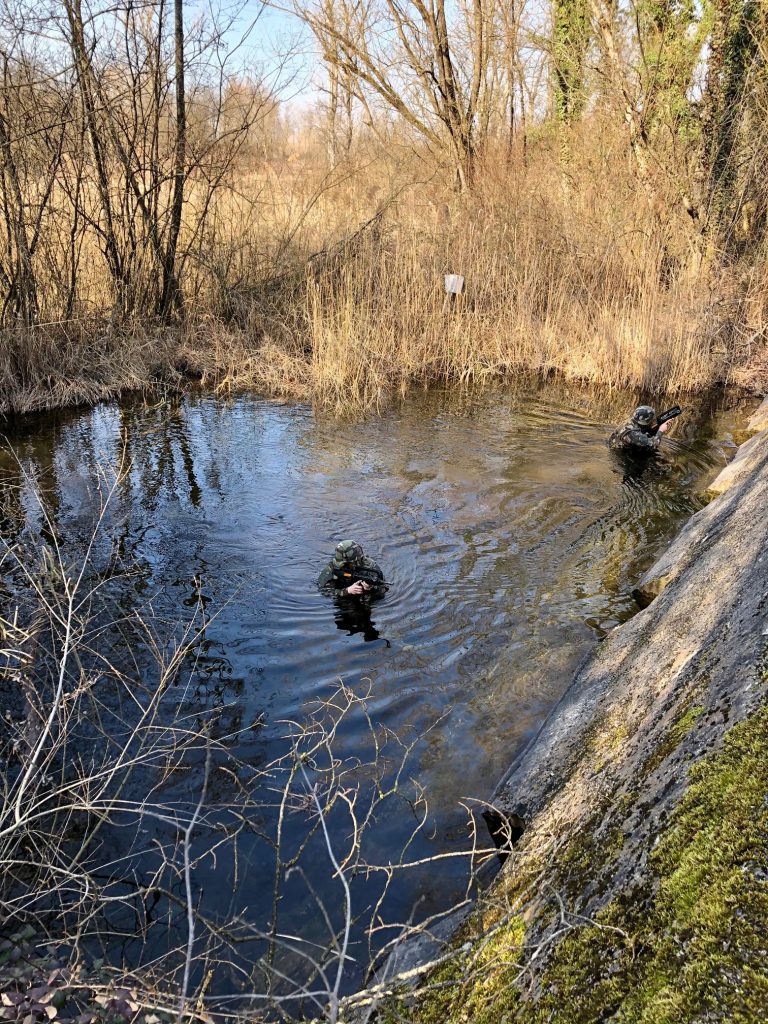
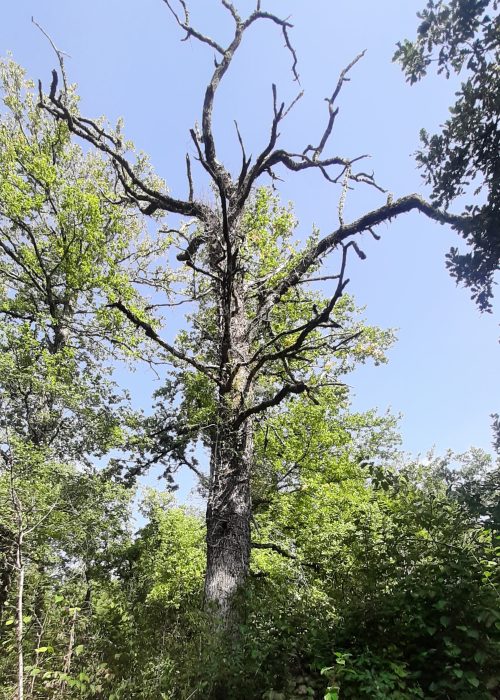
6. Forest restoration
Restoration of the Mont Genêt wood
This is 60 ha of oak and hornbeam trees with little regeneration and increasing brambles and invasives species. The proposed management consists of favouring old trees with cavities for bats and birds of prey, such as the western red-footed falcon (Falco vespertinus), the European honey buzzard (Pernis apivorus), the black kite (Milvus migrans), and the Short-toed Eagle (Circaetus gallicus). The creation of senescence islands and thinning cuts should promote biological diversity. Two nesting masts equipped with cameras are planned in the canopy.
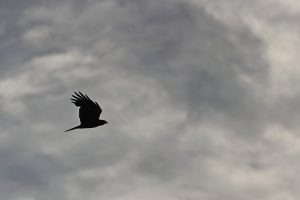
7. Raising public awareness
Informing and raising awareness
Several internal and external educational actions are planned for the local population :
- Large information panels around the camp
- A 3D model to raise the awareness of the soldiers on site
- A puppet show for children and a stuffed animal inspired by the Little Bustard
- A film on the key moments of the project
- A documentary
- An interpretation trail promoting the natural heritage in the south of the camp.
